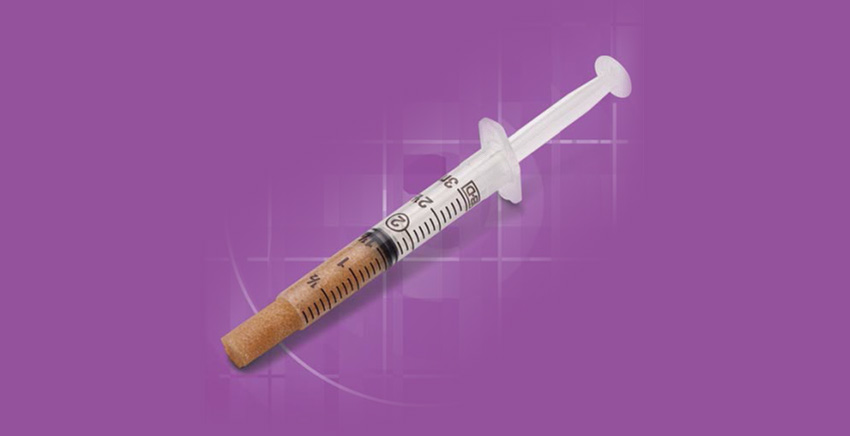DBM PUTTY & CRUNCH

OSTEOINDUCTIVE
Demineralized bone matrix (DBM) contains a variety of biologically active bone morphogenic proteins (BMPs), which are among the osteoinductive components of bone. The BMPs promote mesenchymal cells differentiation into chondrocytes and osteoblasts, leading to new bone formation. More than 20 BMPs (including BMP-2 and BMP-7) have so far been identified in human allograft bone tissue. Each batch of tissue used in production is tested with a validated bioassay to quantify its osteoinductive potential.
OSTEOCONDUCTIVE - OSTEOGENIC
The cortico-cancellous bone chips in the DBM crush mix provide an osteoconductive scaffold for bone growth. When mixed with fresh bone marrow aspirate or autograft from the patient, the putty and crush mix become osteogenic.
NO CARRIER
This product is entirely derived from human allograft bone tissue. A unique processing method was invented to eliminate the need for extrinsic organic carriers that have no bioactivity or biological function. Using 100% human DBM helps minimize the dilution of the osteoinductive potential of the graft.
EASY TO USE
The putty and crush mix are formable and flowable. These formulations do not wash away easily and can be used to augment autologous cancellous or cortico-cancellous grafts.
SAFE
The cortical bone is demineralized using a validated process that has been proven to perform viral inactivation. The product is also terminally sterilized using a validated gamma irradiation process. Berkeley Advanced Biomaterials Inc. is accredited by the American Association of Tissue Banks (AATB). The donor tissue is recovered, screened, tested and processed according to standards established by the AATB. Donor screening includes physical inspection, interview with a person who knew the donor, review of available medical records, and review of autopsy findings, when applicable. Individuals considered to be at high risk for AIDS or hepatitis as defined by the FDA and CDC are excluded from donorship. Using FDA-licensed test kits in a CLIA certified lab, a serum sample from the donor has passed a hemodilution review and tested non-reactive for HIV-1, HIV-2, hepatitis B and C, and syphilis. DBM is produced from ground cortical bone. It is intended to be used to fill bone defects and cavities. DBM may be an alternative for a patient who does not wish to undergo an extensive open procedure or for whom open procedure carries a high risk.



